I have a quick quiz for you. Choose one answer:
I would rather…
- Sit in a day-long training session
- Endure a day-long, double-root canal
- They’re essentially the same
With all due respect to hard-working trainers, facilitators and specialists who do their absolute best to share information, tools, tips, techniques and tactics with us for the purpose of improving performance and achieving greater levels of efficiency and profitability, training always seems to be an uphill battle. That’s because human beings are essentially restless souls who would much rather learn through trial and error (baptism by fire?) than being told something.
Remember what Edison said about his journey to the discovery of the lightbulb? “I have not failed. I just found 10,000 ways it wouldn’t work.” Giving students the opportunity to be hands-on and actually do whatever it is you want them to do is far better than asking them to sit for long periods of time, strain to listen closely, make tedious notes, and keep their eyelids from sinking or having the mind go on a classroom walkabout.
I see, and I forget.
I do, and I understand.”
Confucius
Earlier in my career, I worked in an industry that was training-centric. Classroom sessions, facilities tours, pricing-tier strategies, etc. I can’t remember a single training session that wasn’t brutal for me. Yes, I mastered the material that I needed to be successful but, I assure you, I didn’t master it by listening, taking notes, and studying. I did it by delving into the content on my own terms, understanding its importance and context, and discovering how and why it was necessary and helpful for me, the individual, to do my job better.
Much like the Montessori approach to education, I believe the best training is when trainees are given the opportunity to discover and learn mostly independently versus 100% direct instruction. Yes, someone has to present program elements and provide direction but if more time were spent allowing learners to let their curious minds wander and wonder, I’m willing to bet the light bulb would go off more quickly and more brightly.
(As a disclaimer: I take this perspective making the all-important assumption that you and your organization are careful to hire only truly intelligent, curious and motivated individuals. If you don’t, it’s the equivalent of marinating and grilling shoe leather and calling it filet mignon.)
For those of us in the corporate meetings and events industry, this rings especially true. Every business gathering is intended to be a learning opportunity, whether you label the instructional setting a workshop, breakout session, role-play, general session, team-building, convention or trade show, even socializing with work peers. The more you can turn the learning atmosphere into a tactile, three-dimensional experience, the deeper the level of comprehension and retention. This, in turn, results in behavioral changes that boost productivity, and positively impact the bottom-line.
No Two Batters Have Matching Swings
A very well-researched and insightful article in a recent issue of Training magazine entitled Strategies to Make Learning Stick, puts forth the premise, “Learning retention must be approached through the holistic integration of learning methodologies with how people actually learn in the workplace”. In other words, trainers must understand not only how people absorb information, but how they typically approach their jobs, and where the new training best fits. Meanwhile, trainees need to develop a clear context and understanding of how and why information presented to them will help them perform their duties better and more effectively on a day-to-day basis. If they don’t achieve that understanding, they will not embrace “the new way” and the training initiative will soon die on the vine.
Ultimately, the goal of any training program is to turn rookies into stars, stars into superstars, and superstars into Hall-of-Famers.
Having said that, no two quarterbacks toss a football with the exact same throwing motion, no two batters have matching swings, and no two business professionals are exact clones in the workplace. It’s important to give trainees just enough info to work with – key phrase: to work with – then allow them to massage it, study it, test it and, ultimately, apply it once they understand its purpose and have embraced its value.
The Training article, written by Ross Tartell, PhD, Adjunct Associate Professor of Psychology and Education at Columbia University, says U.S. businesses spent $93.65 billion in training in 2017 (an average of $1,075 per learner across all industries) but a whopping 80% of the training and learning was never actually applied in the workplace.
Obviously, sumthin’ ain’t clicking.
Today’s Skills May be Tomorrow’s Dinosaurs Sooner than You Think!
As a result, American business, once a shining star with the best-trained and educated workforce on the planet, is losing its luster. The World Economic Forum predicts 35% of all core work-related skills will change by 2020, which means the need for training will get even stronger. The dire conclusion here is: If U.S. business doesn’t “up its game” and make business training more effective, our chances of winning in the global market are slim.
A 2010 assessment of learning retention conducted by researcher Will Thalheimer found retention rates among trainees staggeringly low. And thanks to evolving technology and a hastened pace-of-life, it’s safe to say people are even more distracted and harder to reach today than they were eight years ago when the study was conducted. Consider these findings:
- People forget 40% of what they’ve learned in 20 minutes, and 77% of what they’ve learned in six days.
- People forget 50-80% of what they’ve learned after one day.
- People forget 90% of what they’ve learned after one month.
If today’s trainers (and trainers of tomorrow, for that matter) can successfully and significantly boost these numbers and strengthen retention and application, what might it mean for your business, your industry, America’s economy, and the global marketplace?
Plenty!
Time to Hop Aboard a New Training Train
So … when planning and preparing for your next corporate meeting or event, ask yourself:
- Are you simply dusting off old training habits and regimens when it’s time to share important new information, tips, tools, techniques and tactics with your organization? (“But we’ve always done it this way!”)
- Do your workshops and breakout sessions have the same look and feel from year to year?
- Is your “experiential learning” truly an experience, or more “exasperational learning”? (Yes, I made that word up.)
- When was the last time you noticed a palpable “buzz” and excitement back in the workplace following a program that included training and education? (The type of “buzz” and excitement that positively impacts morale, performance and the bottom-line.)
Yes, some tried, true and timeless training methods are worth carrying forward but certainly not all, maybe not even many — especially considering the aforementioned prediction that one-third of all core, work-related skills will change over the next two years.
It’s time to change. Time to hop aboard a new training train. If you don’t realize that yet, you and your organization may be left at the station, standing on the platform asking, “What happened?” as America’s best and brightest journey down the rails to great success.
We’ll delve into this topic a little further in future blogs with the goal of transforming “Sermon-on-the-Mount”-style presentations into powerful experiences that lead to measurable business results.
CONCLUSION
The need for truly effective corporate training is more important than ever before as one-third of all core, work-related skills will change over the next two years.
Cheers,





